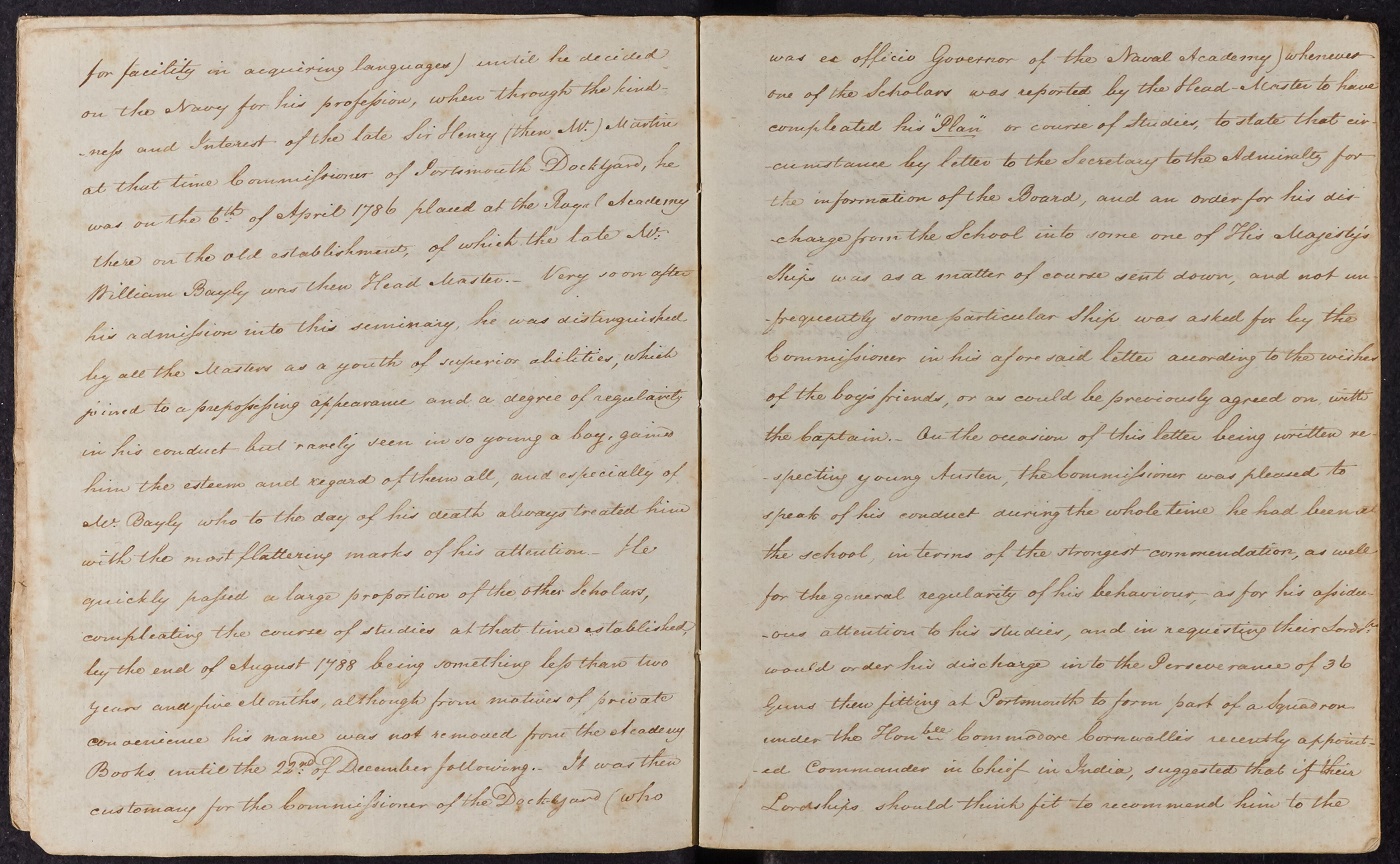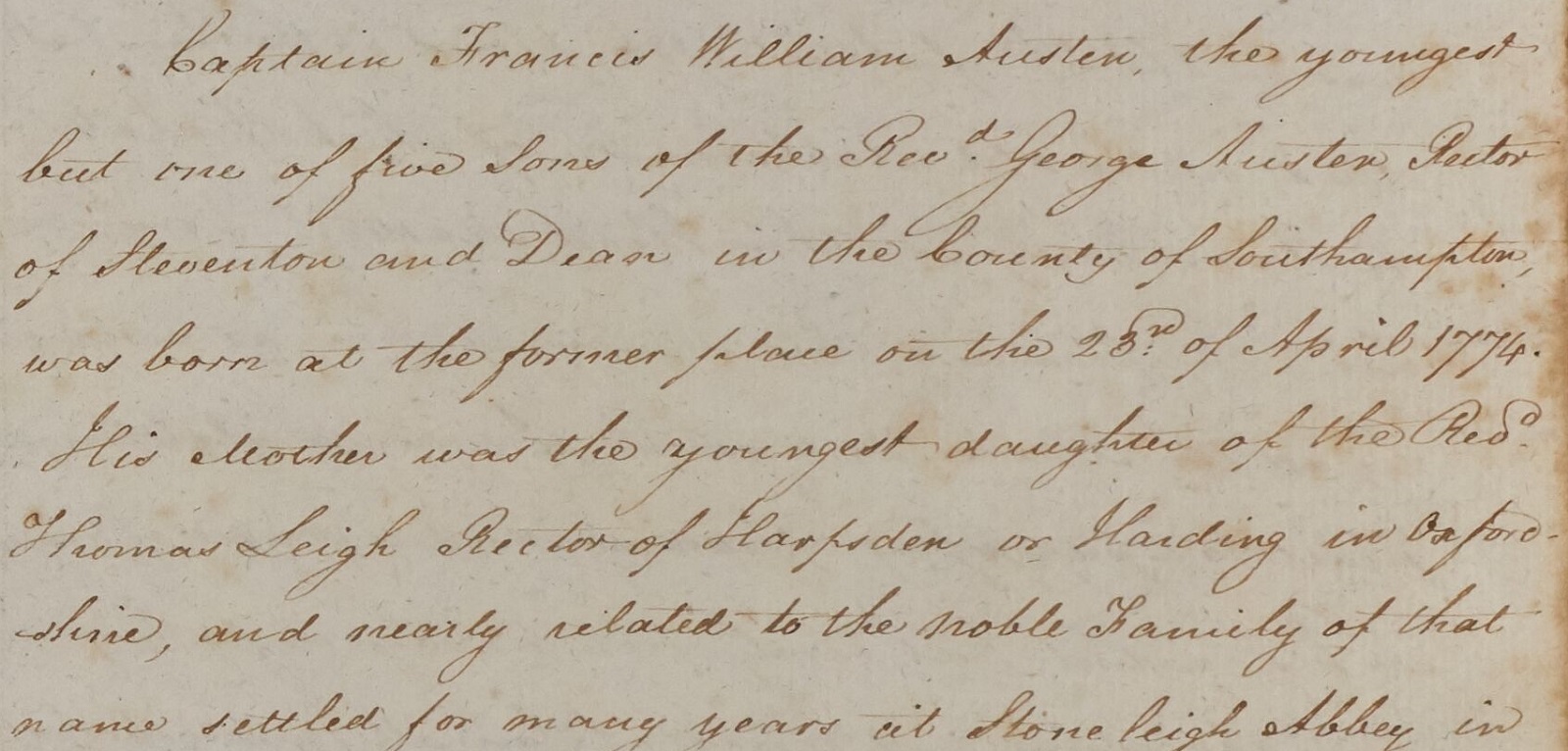Transcribing Francis Austen’s memoir
Could you help us to make the first full transcript of Admiral Sir Francis Austen's unpublished Memoir? We are inviting our audiences from around the world to help us transcribe the Memoir for the first time.** UPDATE! **
We have been completely overwhelmed by the incredible response we have had to our transcription project, receiving thousands of responses in just 24 hours. As a result, we are no longer able to receive applications. Thank you for your interest and support. To hear about similar projects in the future, please sign up to our newsletter.
Transcribers needed!
Could you help us to make the first full transcript of Admiral Sir Francis Austen’s unpublished Memoir, now on display for the first time in our new exhibition, Travels with Frank Austen. We are looking for help from our audiences around the world to help us transcribe the memoir and discover more about Frank Austen’s life and the world in which Jane Austen lived and wrote.
When you send it back to us, we will check it and add it to the full transcription. Eventually, the full Memoir will be published online for all to read.
Here is a sample of the manuscript so you can get a taste of what would be involved (click to see close up):
About the manuscript – what will I be transcribing?
The memoir consists of 78 pages of handwritten text. It is believed to be the hand of Francis Austen himself, although it is written in the third person.
The descriptive narrative moves swiftly, however there are also moments of deeper reflection and detail, indicating that it was a personal memoir.
The text as a whole remains unpublished although some details are known, as short extracts have been published in various biographies of the Austens.
We know that it contains an account of Frank Austen’s life from his childhood in Chawton to entering the Navy, carrying despatches to Lord Nelson at Palermo, the blockade of Genoa and service in Egypt, a stay with his family in Bath in 1802, further travels in the West Indies with Nelson’s fleet as captain of the Canopus and the death of Nelson, Frank’s marriage and settling in Southampton with his mother and sisters, a sojourn on St Helena on East India company business, on the China station, and finally retirement to Chawton.
Transcription: what is it and how do you do it?
We want to make an accurate transcript of a handwritten manuscript. Reading and recording historic handwriting can be challenging, but it isn’t complicated. You just write down exactly what you see on the page!
This is what we want you to do:
- Write exactly what you see. Include everything: punctuation, spellings, capitalisations, crossings out.
- Don’t correct anything! There will probably be historical spellings, mistakes and errors, but you should record everything exactly as it is written.
- Include crossings out – you can do this using the strikethrough key on Word like this: like this
- Include additions – eg if a word has been added above another word you can add it like this: ^like this
- If you don’t know how to add a symbol, just leave us a note – either highlight your comment so that we see it, or add a New Comment in the Review pane.
- If you can’t read a word, just make a note so that we can get someone else to have a look at it too.
- Make a note of the beginning and end of the page, like this: [end of p. 2]
- Make a note of anything you think might need further research – names, places, battles, naval terms etc
- Please send us your transcript in Word so that we can edit it and add it to the rest of the full transcript.
Once you have sent your transcription back to us, we will check it through and compile a full transcript of the whole Memoir. It will then be published online for all to access.

